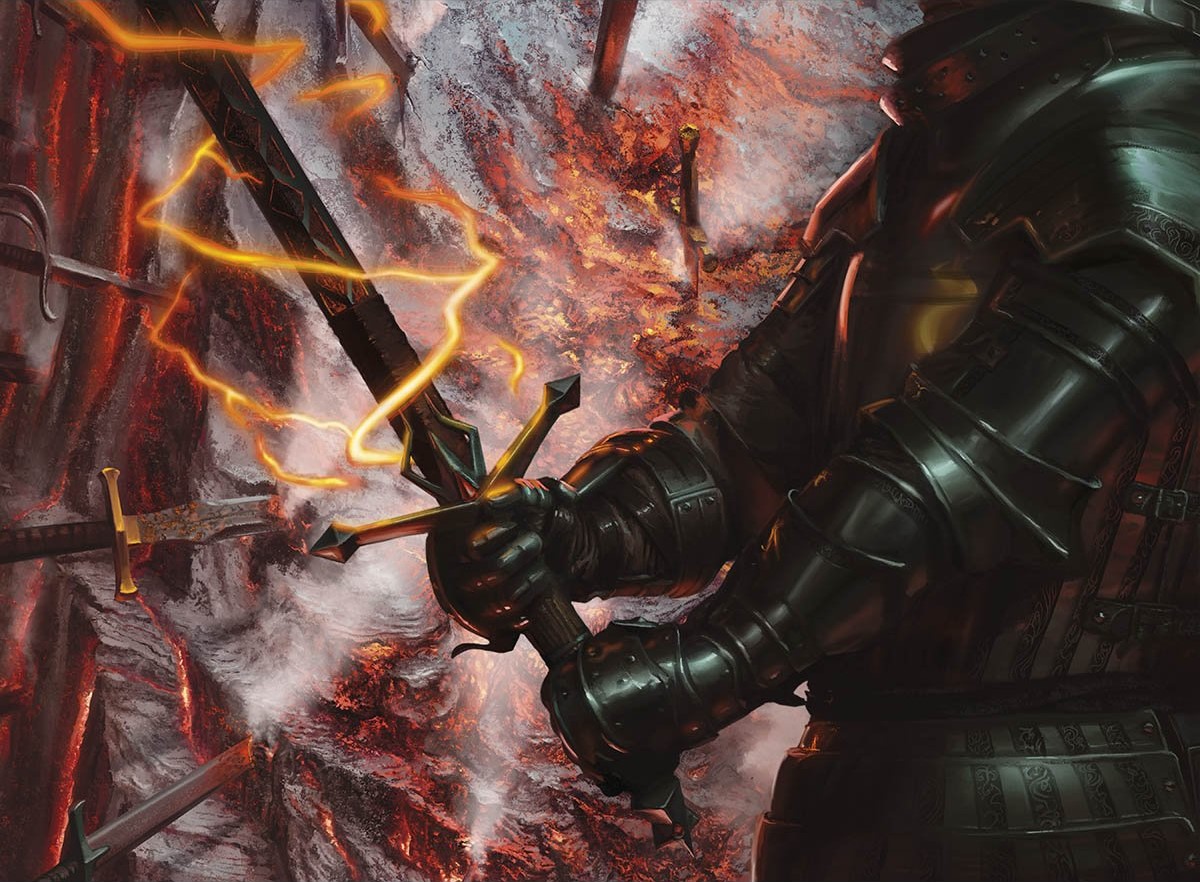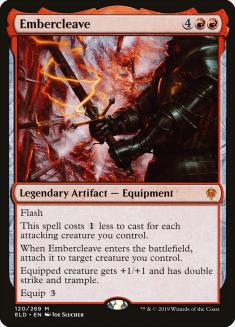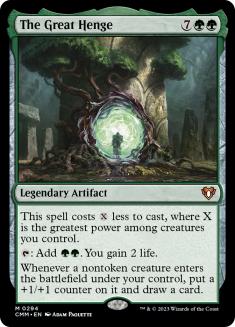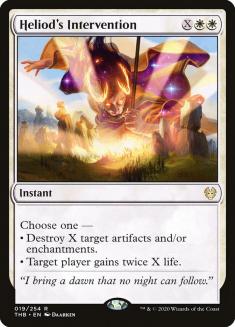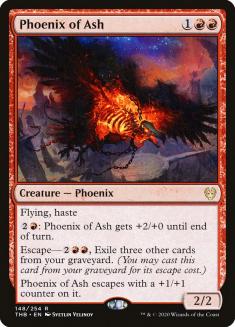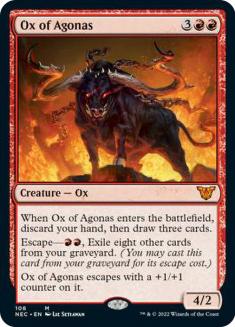For the first time in what seems like ages, Standard has enjoyed a healthy metagame for nearly a full season. The opening weeks of Omnath, Locus of Creation nonsense were shut down quickly by an early ban, and since then the format has continuously evolved with different decks taking the mantle of top dog only to be usurped the following week.
This dynamism is typical of a healthy Standard environment, but it typically dies town towards the end of the season, when the metagame reaches something resembling a steady state. At that point you see a well-defined and well-tuned top tier of archetypes that have proven themselves worthy over multiple stages of the format’s evolution. Some find this point in the format to be stale, but for those who love the minutiae of Magic preparation, it’s the best time there is.
In the early stages of Standard’s evolution, preparing for events is about taking advantage of the blind spots in that week’s metagame, reacting to what did well the previous week, and finding a reasonable build of what is to be the format’s next it deck. Of course, you still want to prioritize raw power in order to be prepared for anything unexpected, but for the most part it’s about staying one step ahead of the field.
But as we reach the steady state, the metagame is much more predictable, since the decks that failed to adapt fall by the wayside and the metagame coalesces around those that stick around. At this point, you can simply choose your weapon of choice from among those battle-tested archetypes and go about tuning your list with card choices that are specifically targeted towards the newly narrowed metagame. Alternatively, you can build a novel archetype that may have significant holes in a wider metagame but matches up well against those top-tier decks.
Regardless of which path you choose, the rules of engagement are well-defined. We’ve had weeks to play against these archetypes and determine how best to interact with them. As such, there are specific rules you should follow in order to find success, whether you’re tuning or building from scratch. I’ve identified four that I keep in the back of my head at all times when preparing for a Standard tournament.
1. Interact with creatures at instant speed.
Gruul Adventures is the top deck in Zendikar Rising Standard. Gruul Adventures wins a lot of games with Embercleave. That alone is enough to incentivize every other deck to err towards instant-speed creature removal, because otherwise you’re forced to either interact with each large creature immediately with a piece of sorcery-speed removal or cross your fingers when they untap with a Lovestruck Beast.
Obviously the prayer strategy has rarely been good in Magic’s history, but it may not seem obvious why simply removing their creatures at sorcery speed is a deficient plan. First, you never get to set up a situation where you have blockers and can force them to Embercleave into your removal spell. If you’re dismissing the value of these situations because good players will play around your removal, you’re failing to realize that aggro decks are forced to close the game before your more powerful end-game comes online, so it’s often true that they can’t play around your removal spell.
Second, and even more important, is the implication of you being forced to respond to each creature with an immediate removal spell. There’s so much value for your opponent in knowing how you have to react to a play. They can sequence their worst threats first so that you are more likely to run out of answers for their more important threats. They can force you to cast your removal on a turn where they know you’d rather cast something like Yorion, Sky Nomad or another threat and make it hard for you to turn the corner and start closing the game. And they can also determine whether you have any interaction at all if you let a threat go unopposed.
So much of the tactics of Magic is forcing your opponent into inefficient sequencing or trades by limiting the reasonable options that are available to them, while they attempt to do the same to you. Embercleave may look at its best when you’re casting it to win the game, but its most important role is the value it gains from your opponents trying to play around it.
Beyond Embercleave, instant-speed removal is also quite important against Dimir Rogues, which remains one of the most popular decks. For reactive strategies, being able to answer a Thieves’ Guild Enforcer or Soaring Thought-Thief before they untap prevents them from enacting a protect-the-queen strategy, which is their ideal plan in those matchups. For aggro decks, your instant-speed removal ensures that your early creatures won’t get ambushed in combat.
Scorching Dragonfire and/or Fire Prophecy have become staples in Gruul Adventures as a result of this rule, and it’s no surprise that the best Yorion deck went from an Azorius build, a color combination lacking in instant-speed removal, to Esper, with access to Eliminate and Heartless Act. Now I’d look even deeper at cards like Soul Sear as a red removal spell that answers Lovestruck Beast, or Giant Killer, which exists in a color that is otherwise lacking in this department. And if your deck of choice is Mono-Green Food, then Ram Through is the number one card that I often find missing from lists these days.
Choosing instant-speed removal already increases your options, but the value of that optionality is particularly high because of the nature of the current Standard metagame.
2. Interact with artifacts and enchantments.
I went over the power of Embercleave above, so there’s no need to reiterate that here even though it’s part of why answering artifacts and enchantments is so important. But the biggest one here is the other legendary artifact in Gruul Adventures: The Great Henge.
Henge doesn’t literally end the game as quickly as Embercleave does, but it might as well, because once it gets going the avalanche of card advantage rapidly snowballs out of control. Normally the response to these kinds of cards is to try your hardest to end the game if you don’t have a direct answer, but the two life it gains each turn makes employing such a strategy difficult. The Great Henge demands an answer nearly every time it enters the battlefield, so it’s wise to have some answers in your deck.
The emergence of Esper Doom Foretold as the top Yorion deck, and a top deck in Standard overall, also heavily incentivizes you to have access to some Disenchant effects. Answering the namesake card is quite important for aggressive decks, along with Glass Casket and Elspeth Conquers Death.
Wilt is the clear winner here, both because it answers Embercleave at instant speed and because you can cycle it in your aggressive decks when you absolutely need a threat. Gemrazer is tempting, but with the decline in stock of Stonecoil Serpent, the mutate creature doesn’t have the same impact. If you’re looking for a creature that can serve this role, then I’m a fan of Embereth Shieldbreaker right now, which offers the Gruul Adventures deck a few extra ways to trigger Edgewall Innkeeper as well as valuable interaction for The Great Henge and Glass Casket.
My sleeper hit here is Heliod’s Intervention. It’ll most often be a three-mana Disenchant, but the upside of gaining life against aggro or decimating an Esper Doom Foretold player’s battlefield gives the card tremendous upside. Its inefficiency makes playing a lot of copies untenable, but I like the first copy as a sideboard card in nearly any deck that can cast it. The time has come to pore over and optimize every single slot in our lists, and these kinds of high-ceiling cards are exactly what I’m looking for to gain an edge.
3. Have access to escape cards.
The least controversial of these rules, in my opinion, this one has been followed by most Zendikar Rising Standard players since Dimir Rogues first rose to prominence. What began as an aggro deck filled with underpowered threats and good interaction soon eschewed all but the necessary mill enablers for more and more interaction, morphing into a control deck that only plays the creatures in order to take advantage of Into the Story.
Since the rest of the Dimir Rogues deck is filled with cheap interaction, trying to stop Into the Story on the stack is a losing strategy, so the goal here is to keep them off casting it for as long as possible. Escape cards, which empty your graveyard proactively and are often put there by your opponent, thus generating a free card, are the best way to enact this strategy.
Kroxa, Titan of Death’s Hunger; Cling to Dust; Phoenix of Ash; Chainweb Aracnir; and Ox of Agonas are the most commonly played escape cards, but you shouldn’t be afraid to scrape the bottom of the barrel here, because it’s important to have a diverse range of costs among your escape cards so that you have an effective option as often as possible.
Sometimes your Phoenix of Ash doesn’t exile enough cards. Sometimes you don’t have a window to escape Ox of Agonas before your opponent fires off their Into the Story. Playing a split of them maximizes your chance to disrupt them.
And if you’re in a color that doesn’t have a lot of great escape options, I wouldn’t be afraid to resort to Glimpse of Freedom or even Sentinel’s Eyes. Most of the time you’re not drawing these cards anyway, and the value of keeping your Rogues opponents off Into the Story is huge. I, of course, wouldn’t play the weak escape cards in as high of numbers, but the first copy or two have a lot to offer even if the text box isn’t exciting.
4. Close the game quickly.
To be clear, this rule isn’t telling you to go out and play nothing but aggro decks. You can play a slower deck that treads water early on and seeks to gain its advantage in the mid- or late-game. But once you do gain that advantage, you should be looking to close the game out quickly.
Simply put, there are a ton of cards in Standard right now that are powerful enough to turn even a lopsided position around. From Embercleave and The Great Henge to Dance of the Manse to Into the Story to Ugin, the Spirit Dragon, few leads are safe in the current metagame, and that’s not changing any time soon.
One of the reasons we’ve seen Vivien, Monsters’ Advocate recede from maindecks is the fact that it scores fairly low on this metric for a five-mana planeswalker. A stream of 3/3s is nice when your opponent is interacting every step of the way, but it’s surprisingly mediocre at ending the game unless your opponent has virtually no battlefield presence.
For reactive decks, this metric is less about literally ending the game and more about ensuring that you’re capable of taking away all of your opponent’s outs. You absolutely can lean towards something more aggressive, like the Zareth San, the Trickster build of Dimir Rogues that was recently championed by our own Paulo Vitor Damo da Rosa, but for a deck like Esper Doom Foretold that’s much harder.
When it comes to closing the game for Esper Doom Foretold, you’re generally going to have an overwhelming position with progressively more impactful Yorion triggers or a large Dance of the Manse. The lifegain from Omen of the Sun becomes important to prevent yourself from being punked out by Embercleave, but the threat of Ugin, the Spirit Dragon still looms. It’s the one card that can undo most of a Dance of the Manse, which is why I like including some number of Golden Eggs and Mazemind Tomes to potentially return. These are small tweaks, but right now it’s all about grinding out the small edges against a field of well-tuned decks.
It can seem easier to innovate when the format is in flux and many archetypes haven’t been fully explored and tuned, but for me the most important aspect of innovation is having a clear target in mind. And that target is never clearer than during the final weeks of a Standard season. You know what the top decks are capable of, and they’re often much more concerned with beating the top few decks than having generically powerful cards to beat a wide field.
So now is a great time to explore a new archetype, or find a new spin on an existing one to take a field that thinks they know what to expect by surprise. Just be sure to abide by these four rules, and you will put yourself in a good position to succeed.

